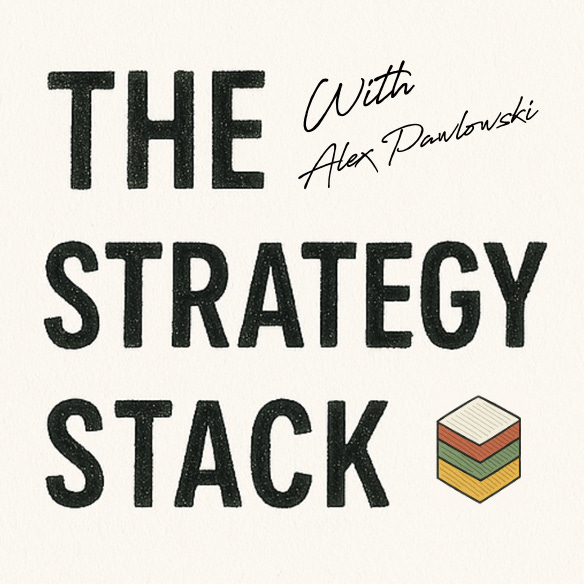👥 Featuring:
Host: Alex (The Strategy Stack)
Building on Episode 3 (Feedback & Telemetry in Hybrid Systems), this session moves from learning loops to earning loops — from how systems sense to how they sustain: revenue architectures, adaptive pricing, usage models, and participatory monetization.
The Focus
How to design a multi-layered revenue architecture.
Turning pricing into a real-time feedback system.
Building trust-based monetization through transparency and soft paywalls.
How participation and governance replace static paywalls and extractive models.
Why Modern Monetization Needs Architecture
Static revenue models break under adaptive systems. Monetization now requires structure and motion:
Revenue architecture defines the invisible infrastructure of how value flows.
Pricing becomes a living signal — adapting to user behavior and ecosystem context.
Governance ensures monetization evolves ethically and transparently.
“Pricing is the street sign; architecture is the power grid beneath the city.”
Core Framework — The Revenue Architecture
1. Map where value flows.
Visualize who creates, receives, and amplifies value — customers, partners, APIs, or data nodes.
Shopify → merchants ↔ customers ↔ partners.
Duolingo → learners ↔ advertisers ↔ institutions.
2. Identify capture points.
Moments where monetization adds value without breaking flow — checkout, unlocks, API calls, ad slots.
3. Layer your models.
Subscriptions monetize lock-in.
Transactions monetize activity.
Advertising monetizes attention.
Finance monetizes cash flow.
4. Reinforce, don’t isolate.
Design streams to amplify each other. Predictable base (subscription) + performance layer (transactions) + ecosystem depth (finance).
5. Measure system health.
Track revenue concentration (<60%), attach rates, and margin per stream. Each loop should reinforce sustainability.
💡 Best practice: Start mapping early. Don’t bolt monetization on later — let it evolve with user feedback.
Intelligent Pricing — Monetization as a Nervous System
Once revenue architecture is set, pricing becomes the sensing layer — translating billions of micro-signals into alignment.
Algorithmic pricing:
AI updates prices in real time based on demand, context, and seasonality.
Guardrails prevent backlash — daily change caps, fairness audits, and transparency dashboards.
Personalized pricing:
Offers adapt to user behavior — rewarding loyalty, retention, or milestones.
“Personalization should feel like recognition, not manipulation.”
Feedback loop:
Each transaction → data → model refinement → improved trust → more transactions.
Case: Netflix
Flat monthly price → tiered HD/4K → ad-supported tiers.
Each phase refined by telemetry and retention data.
Best practices
Label behavioral data before testing algorithms.
Set ethical guardrails and transparency limits.
Measure both revenue and trust (churn, sentiment, stability).
Usage-Based Pricing — Fairness as Growth Engine
Principle: Users pay in proportion to the value they receive.
Metrics: API calls, messages, compute time, transactions.
Benefits: Aligns growth and cost; small users scale naturally.
Risks: Unpredictable bills — solved via real-time dashboards and “bill shock” protection.
Hybrid tiers balance predictability and flexibility — base fee + metered usage.
“Transparency turns pricing walls into trust engines.”
Best practices
Choose metrics that mirror delivered value.
Provide real-time usage dashboards and alerts.
Cap unpredictability and track bill shock rate (<2%).
Soft Paywalls — Converting Through Trust
Hard paywalls break flow. Soft paywalls invite participation.
How it works:
Users access real value first. Prompts appear at emotional high points — right after achievement or momentum.
“Restriction becomes anticipation.”
Examples
Duolingo → prompts upgrade after completing a streak.
Notion → triggers upgrade after collaboration or storage thresholds.
NYT → “2 free articles left” nudges before cut-off.
Best practices
Identify natural “value moments.”
Use positive framing (“Unlock more”) vs. scarcity.
Test thresholds and timing.
Track engagement before and after prompts.
Participation Architecture — Tokenomics and Co-Ownership
From audience to participants — users earn, spend, and govern.
Structure
Define utility (what the token enables — access, discount, rights).
Define earning loops (what actions generate tokens).
Define sinks (how tokens are used to avoid inflation).
Example
Reddit: tokens for quality posts → spent on premium tools or governance.
Helium: tokens for expanding wireless coverage → tied to network performance.
“Healthy token economies are circular — users earn by adding value and spend to access more.”
Best practices
Anchor tokens to real utility, not speculation.
Publish transparent rules and audits.
Reward verified contribution, not volume.
Governance & Metrics — Trust Infrastructure
AI can price in milliseconds; trust collapses in minutes.
Hence: governance ≠ bureaucracy — it’s insurance for trust.
Modern practice
Create a Monetization Council (Product, Finance, Data, Legal, Brand).
Document all changes: what, why, who approved.
30-day notice for updates; value-framing over price-framing.
Monitor churn, sentiment, and refund rates post-change.
Reflection Prompts
Where does value truly flow in your model?
How fast does your monetization system learn from behavior?
Which loops connect revenue to trust?
Where should humans re-enter algorithmic systems?
Key Takeaways
Revenue architecture = structure of monetization.
Pricing systems = nervous system of value feedback.
Participation and governance = cultural layer of trust.
Feedback beats prediction — it compounds faster.
The question is not what to charge — but how value should flow.
“The companies that design ethical, adaptive monetization won’t just survive AI disruption — they’ll shape it.”
Hit subscribe to get it in your inbox. And if this spoke to you:
➡️ Forward this to a strategy peer who’s feeling the same shift. We’re building a smarter, tech-equipped strategy community—one layer at a time.
Let’s stack it up.
A. Pawlowski | The Strategy Stack











